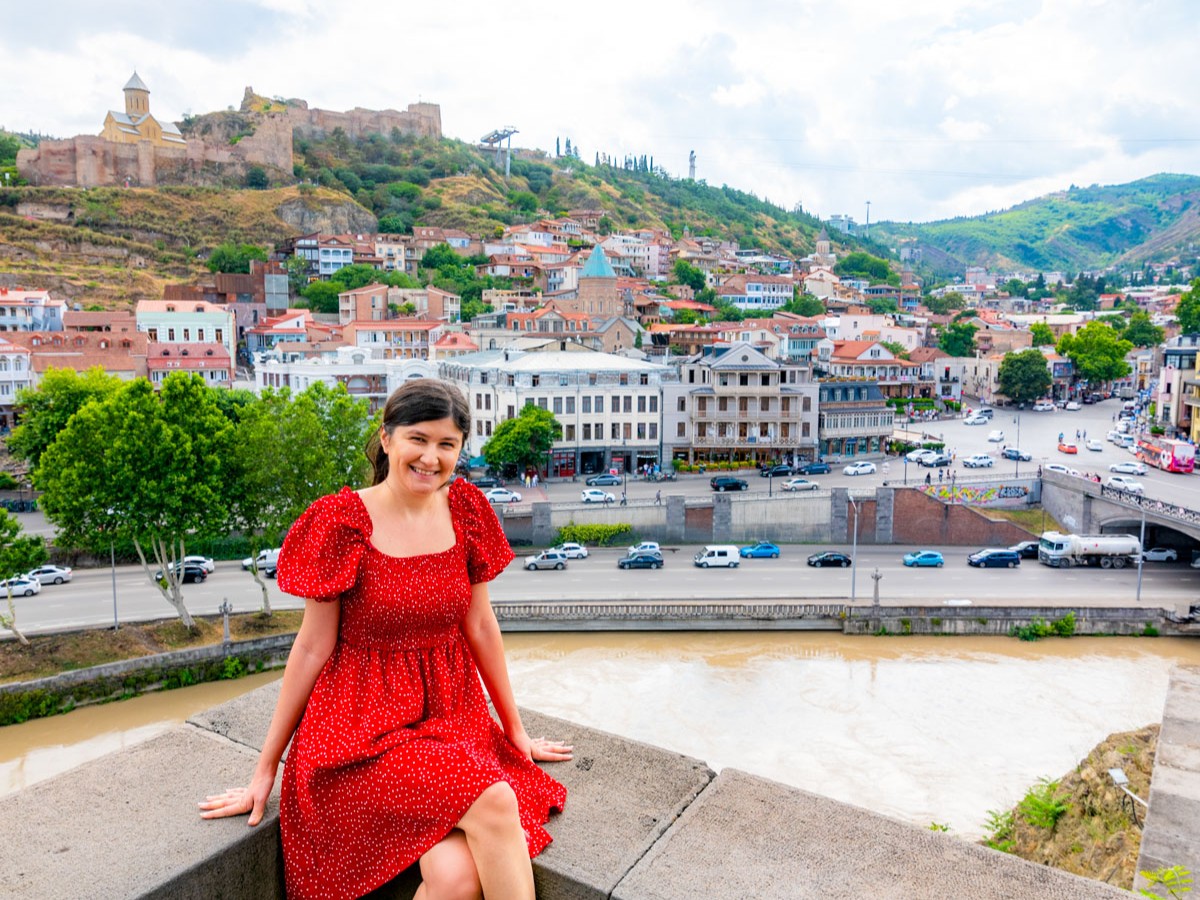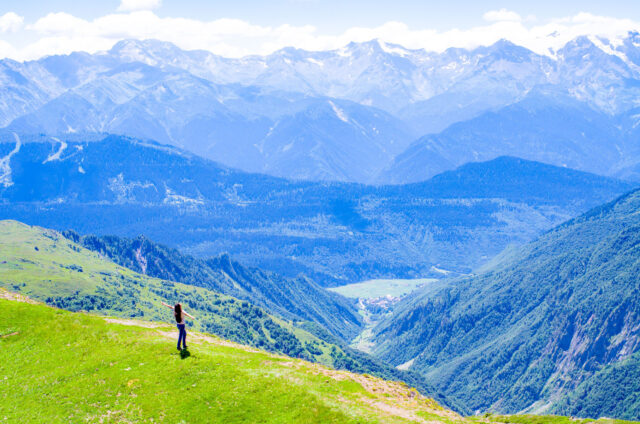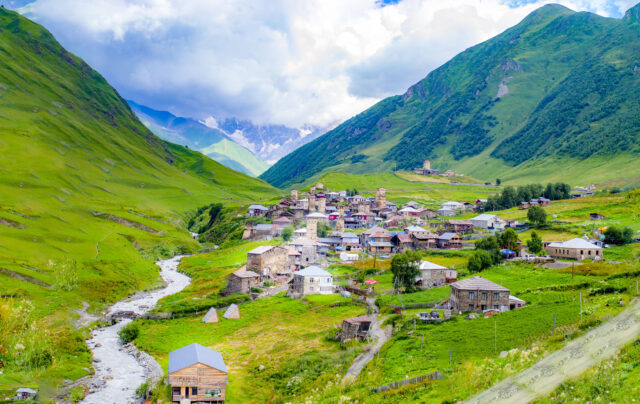Quick heads‑up, fellow travelers: Hit the Road Ket contains some affiliate links. Book through them and I earn a small commission at no extra cost to you – fueling my caffeine fix and future travels! For more details, see my Disclosures.
Planning a trip to Tbilisi but overwhelmed by conflicting advice online? As someone who was born there, I’ve created this comprehensive guide to help you make the most of Georgia’s diverse capital: the best seasons, areas to stay, transport that actually works, and a simple route through the city.
History of Tbilisi
Tbilisi has been the heart of the Caucasus for centuries. The name of the city comes from the word თბილი (Tbili), which means warm. There are still a number of sulfur hot springs and baths in the city, which you can find in the Abanotubani (literal translation – bath district) old district.
Legend has it that in the 5th century the king of ancient Iberia, Vakhtang Gorgasali, once was hunting in the forests near Mtskheta (old capital). He shot a pheasant and sent his falcon to find it. When the bird didn’t return with its prey, he went to search for the birds. He discovered that both the falcon and the pheasant fell into hot springs and died. Fascinated by this discovery and understanding the strategic location of the area protected by mountains and situated on a trade route, he decided to build a new city. This legend if fun to retell, although archaeologists found that the area was settled from the Bronze age.
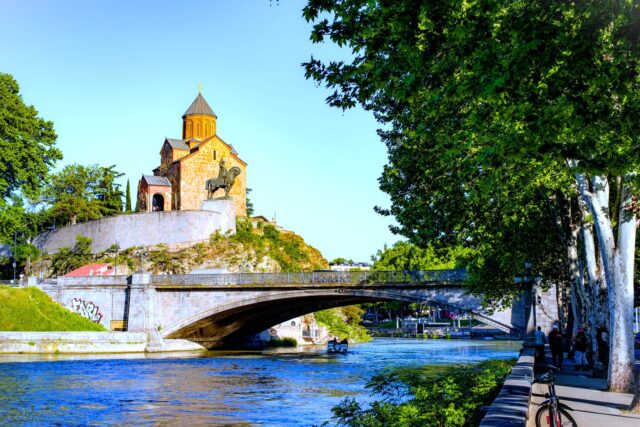
Over the centuries, the city was under the rule of various invaders. It also welcomed many visitors of different nationalities, as a result it became multicultural – there are people from a number of ethnicities who lived here for centuries. This can be seen from the fact that in the old town you now have orthodox and catholic churches, synagogue and mosque very close to each other.
Currently, the city has been relatively modernized (unfortunately, there also have been uncontrolled building patterns with some ugly buildings spoiling the city’s views). You find all sorts of different types of accommodation from 5 star hotels to guesthouses, numerous restaurants and cafes, bars and clubs (some of them shady though, so be aware where you are going).
I will be honest with you, it is a great city to visit for a few days, it offers a lot in terms of culture, mixed European and Asian, as well as modern architecture, great food, etc. But living here for long is definitely not so great, given that it has terrible traffic, very few green spaces, overcrowded public transport and overall quality of life is low.
When to Visit Tbilisi
Tbilisi has distinct seasons with hot summer, warmish autumn, cold winter and rainy spring. The city hardly ever gets freezing temperatures though. So you hardly ever see snowy scenes (the one pictured is a rarity). For that you will have to go out of town.
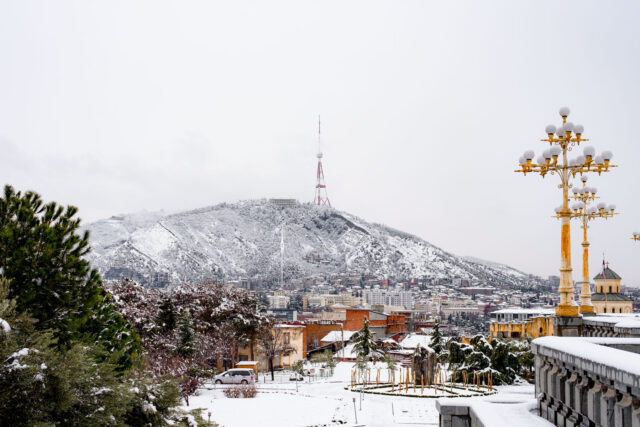
The best times to visit are May-June, when the rains subside and it’s not too hot yet; and September October. In recent years climate change may mass with this arrangement, but in general, this are the most optimal times.
How to Get Around Tbilisi
The city center is easy to get around even on foot. So you will probably hardly need public transport, unless you venture far.
The city has more or less developed public transport. Metro is the most convenient and the only transport I usually use. It has only two lines and doesn’t cover all areas of the city, but it covers most tourist areas. I prefer to walk from metro stations, than take buses or minibuses.
Buses can be more complicated for tourists, as they have only Georgian information usually, however, Google maps offers good recommendations, so you should be able to take them. Plus, buses can be rather crowded and unpleasant. Outside rush hours though, they are quite all right. Google maps usually provides correct information on which transport to take to your destination – I myself use it to identify the bus numbers I need.
Minibuses are also abundant, but inconvenient for tourists and unnecessary inside the city, so unless you can ask, where they go, take another transport.
Taxis are abundant, but I don’t suggest hailing one on the street. Do use the Bolt app.
Tbilisi Transport Payment Options
Buses and metro in Tbilisi cost 1 GEL per trip.
- For any of the means of transportation you can use a bank card (any of them with the chip)
- You can also use a transport card, which can be bought at any metro station for 2 GEL.
You can’t make cash payments. But if, by any chance, you forgot your card, there are some people standing at the metro stations with the cards. You can give them cash and they will let you pass.
I am providing a short overview of the transport in Georgia in my dedicated article here.
Where to Stay in Tbilisi
Accommodation options are abundant and nowadays actually not as expensive, as they used to be in the past.
Most people visiting the city stay in the following popular areas, which are close to most sightseeing spots:
- Old town area,
- Around Rustaveli Avenue,
- Marjanishvili area.
These are certainly best, as they are centrally located and you can walk everywhere. Alternatively, to save money you can find accommodation near metro stations for instance in Saburtalo area (on second line of the metro) or Isani area.
There are some locations, however, where I wouldn’t suggest finding accommodation. For instance, I wouldn’t recommend the area around the Train Station, as it’s unpleasant to walk there in the evening/night – although if you arrive late by train, walking from train station itself to metro is fine, as this is a busy part. Another area I would avoid is around Grmagele. I also don’t like the area near Samgori metro, due to the fact that it’s a very massy bazaar area.
List of Popular Hotels in Tbilisi
Note: I haven’t stayed in either of them, however, my colleagues and friends did, plus I visited their conference halls or restaurants.
Higher end hotels:
- Rooms Hotel is a very popular place for visitors to stay in Georgia. I myself haven’t stayed there, but I have stayed in their branch in Stepantsminda. Their style is quirky wooden décor. The location is excellent – in the middle of Rustaveli metro station and the philharmonic.
- Swissotel is the relatively newly built hotel near dry bridge. It offers excellent views over the city. Plus, it has a lovely café.
Mid range hotels:
- Graf Hotel is a very popular reasonably priced hotel in the heart of the old town.
- Taberne Boutique Hotel is another mid range hotel with reasonable prices and very well regarded.
Low budget hotels:
- Eleon Boutique Hotel provides clean and spacious private rooms for a low budget – plus, they have discounts. It’s located in the Avlabari areas, which is the old part of the city, you can walk from here to all around the old town.
Restaurants and Cafes in Tbilisi
I am not great with restaurant recommendations, as I don’t go to Georgian restaurants often. Many of them have extremely loud music, shouting crowds and drunk people. So be aware of that, when you choose a Georgian restaurant to go to. There are nice ones too of course and below are a few of the widely loved and great restaurants with Georgian food in Tbilisi. Keep in mind that none of them are budget options.
I am also listing of the widely liked and cheaper restaurants below – I can’t say they have the best food, but they are pretty decent:
- Pasanauri – various locations in Tbilisi
- Machakhela – various locations in Tbilisi
- Sakhachapure #1 – at least 2 locations on Rustaveli
Also do buy bread from a number of tones (sort of bakeries) you can find around. They are very tasty with cheese.
Note: Absolutely avoid the cafes and restaurants on Shardeni street. While many years ago they were trendy among Georgians, nowadays they are just a tourist trap with overpriced menus and no authentic food.
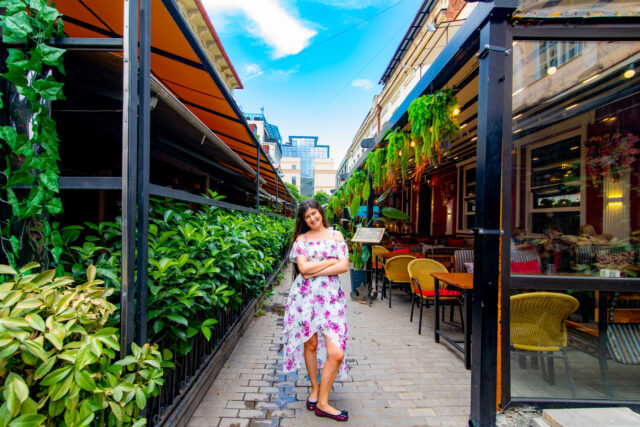
If you want to experience local food with a guide, this highly reviewed tour has great options.
Here’s also a tour, which includes some of the highly popular places, like Puri Guliani, Fabrika and Bazari Orbelianze.
Coffee and sweets culture has been slowly developing, especially in cities. In Tbilisi in particular you already get a wide variety of cafes with various options.
Other Tips for Visiting Tbilisi
Increased Prices
In recent couple of years prices in Georgia in general and in Tbilisi in particular have hiked up substantially. Prices at many restaurants and cafes, for instance, basically doubled. While tourist accommodation prices don’t seem to have hiked, in general visiting Tbilisi is no longer a cheap gateway it used to be.
If you are buying anything from the street vendors or markets, they usually give you far higher price than it actually should be.
Accessibility and Walkability of Tbilisi
Old town areas in Tbilisi are hilly. Plus, the pavement is often uneven or with cobblestones, so keep this in mind, when deciding on your itinerary. If you have mobility issues, make sure to read in detail in my itinerary how to avoid uphill walks and stairs for each of the sightseeing spots.
Safety in Tbilisi
In general, Tbilisi is a relatively safe city. It’s certainly much safer than in the 90s. Although the safety situation deteriorated recently. However, the usual vigilance will keep you safe.
If you are a solo female traveler, you might encounter some weird guys, who will try to tell you how beautiful you are in 3 different languages (they know a couple of words of each). My advice is not to give them any attention. Not even an answer, let alone a smile – that will just make them worse. Just keep walking and ignore them, this works best in my experience.
Be careful while crossing the streets on zebras. Drivers don’t always stop at zebras (during the past decades they have been learning a bit, but it’s still a big issue). I never expect any car to stop for me at the zebra, so I am always careful and often show by hand that I am crossing and they should stop.
There are a number of bars and clubs in Tbilisi. Most of them are safe, however, there are some shady places, where I heard they scam tourists. This is not a common occurrence, but still don’t follow anyone offering to take you to “a cool place”. The dodgy bars are normally not listed on the maps, so double check, where you are going, if you end up going with someone to an unknown location.
You will see many street dogs in Tbilisi. They are usually vaccinated; they have a sign of this on the ear. So normally they shouldn’t cause you any problems. However, rabies still exists in Georgia and if you get bitten or scratched by a dog or a cat, seek medical advice.
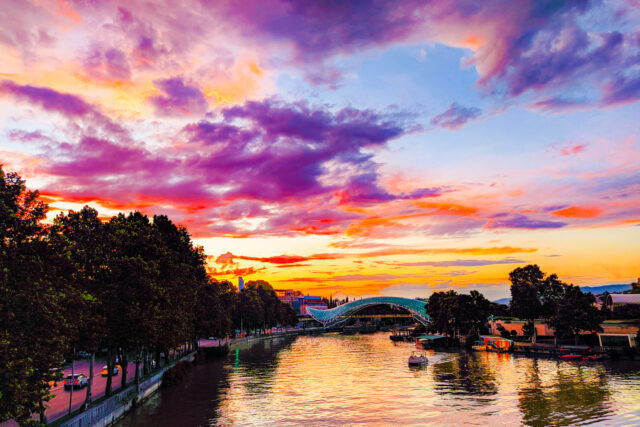
Tbilisi Itineraries
Tbilisi 1-day itinerary highlights: Start from Avlabari station, walk around the old town, go up Narikala, Liberty square, stroll next to the river, visit New Tiflis area and Aghmashenebeli street
Tbilisi 2-day itinerary highlights: Start at Liberty square, go up to Mtatsminda, explore Mtatsminda area, walk on Rustaveli avenue, walk to Vake
Please, see my step-by-step itinerary in the dedicated article.
See also
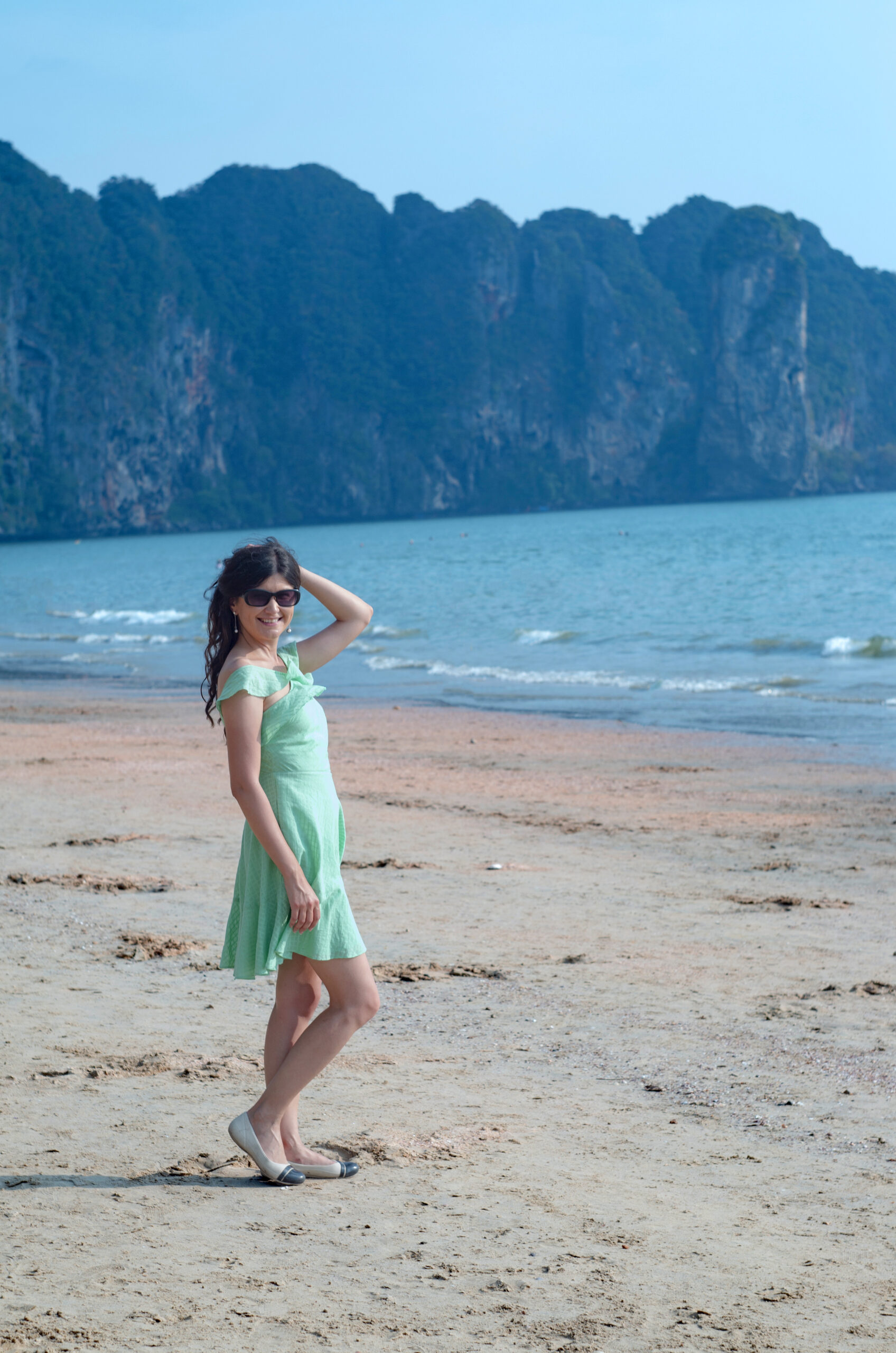
Hello I am Ket,
A traveler, planner, and sweet tooth behind Hit the Road Ket.
Travel isn’t just my passion – it’s a lifeline for my mental health. Having lived in three cities and explored 60 countries (and counting!), I created this blog to share my experiences, smart tips, and itinerary advice with fellow travel lovers. I’m all about making the most of limited time, finding scenic routes, and turning every trip into something memorable – coffee in hand, of course.
